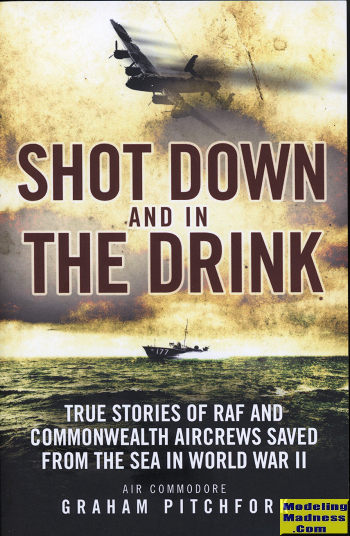 An
aspect of air warfare that rarely gets a lot of press is what happens to air
crew when they are shot down over water? Well, they don't all perish from
exposure, but early in the war a considerable number of them did just that. The
main reason was a lack of proper air-sea rescue (ASR) units, equipment and men.
For sure, there was some naval assets that were available to help search for
downed crew, but what was available was totally inadequate for the task.
An
aspect of air warfare that rarely gets a lot of press is what happens to air
crew when they are shot down over water? Well, they don't all perish from
exposure, but early in the war a considerable number of them did just that. The
main reason was a lack of proper air-sea rescue (ASR) units, equipment and men.
For sure, there was some naval assets that were available to help search for
downed crew, but what was available was totally inadequate for the task.
Naturally, things did improve, but at a fairly slow pace. There were several
things that had to be overcome for the service to be effective.
To be brief, those were communication, organization,
equipment and training. Air crew did not have a clue as to the proper way to
exit a sinking aircraft and even if they did, their survival equipment was
minimal. In fighters it was pretty well non-existent as all they had was their
life vest.
There was no standard frequency to call for help and no
procedures to quickly relay that info. What had to be developed was a command
structure that was separate from both standard RAF and RN practices. Then
equipment had to be devised and tested to ensure that the downed pilot/crew had
a chance of survival. Things like a floating knife or flashlight needed to be
developed as well as emergency rations. Improved dinghies needed
to be developed including one small enough for fighter pilots. Then crews had to
be trained on their use and they had to practice exiting a doomed aircraft. Many
had the feeling 'it will never happen to me', and some of these men perished
because of that.
Finally, there had to be rescue equipment in the form of
fast boats that were well armed as well as medium and long range search
aircraft. Later in the war, planes large enough to carry powered lifeboats that
could be dropped to crews and those lifeboats had to be developed.
Much of the first portion of the book covers these
developments as well as tales of crews that did things right and those that did
not. The rest of the book is tale after tale from various parts of the world on
the experiences of various crews that survived being down at sea and how they
managed to eventually get rescued. Several of these crews travelled over 100
miles or spent many days in the water before rescue. Each tale is a fascinating
look at how these men coped and the extent of the searches to find them.
It is not a quick read as there are minimal photos, but
it is one that will keep your interest from the first page to the last. Highly
recommended.
August 2017
Copyright ModelingMadness.com. All rights reserved.
For more on the complete line of Osprey books,
visit http://ospreypublishing.com
.
If you would like your product reviewed fairly and quickly, please
contact
me or see other details in the Note to
Contributors.
 An
aspect of air warfare that rarely gets a lot of press is what happens to air
crew when they are shot down over water? Well, they don't all perish from
exposure, but early in the war a considerable number of them did just that. The
main reason was a lack of proper air-sea rescue (ASR) units, equipment and men.
For sure, there was some naval assets that were available to help search for
downed crew, but what was available was totally inadequate for the task.
An
aspect of air warfare that rarely gets a lot of press is what happens to air
crew when they are shot down over water? Well, they don't all perish from
exposure, but early in the war a considerable number of them did just that. The
main reason was a lack of proper air-sea rescue (ASR) units, equipment and men.
For sure, there was some naval assets that were available to help search for
downed crew, but what was available was totally inadequate for the task.